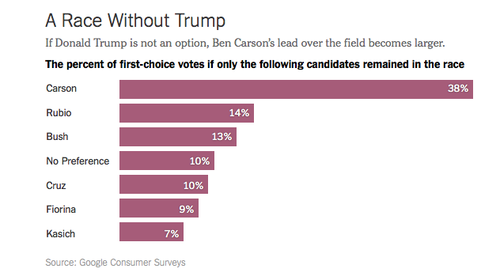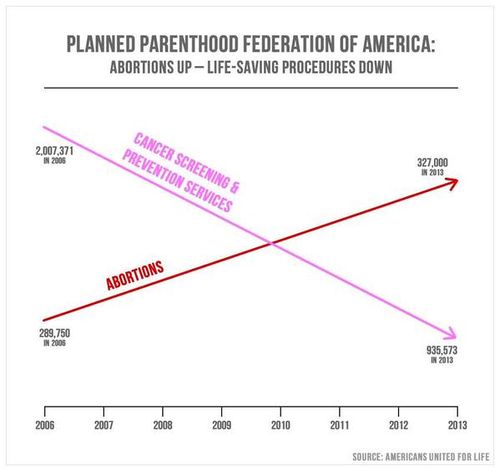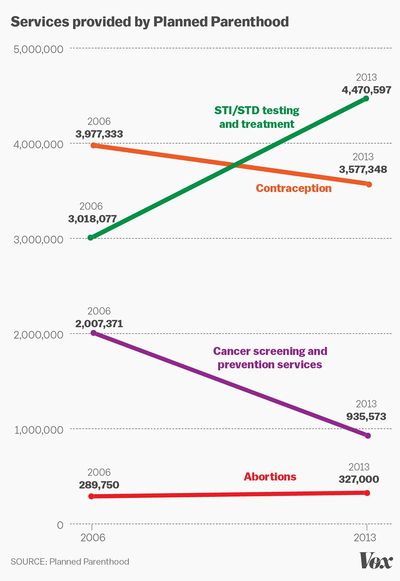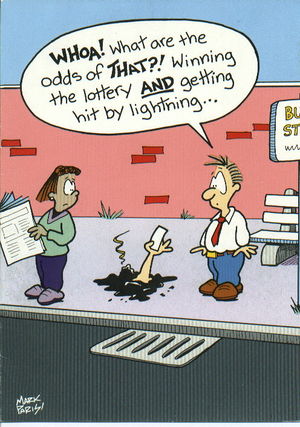Chance News 107: Difference between revisions
| Line 37: | Line 37: | ||
---- | ---- | ||
What's with | What's going on with these bars? | ||
<center>[[File:Race without Trump.png|500px]]</center> | <center>[[File:Race without Trump.png|500px]]</center> | ||
Revision as of 01:26, 30 October 2015
Quotations
"Mr. Slemrod [a public finance economist at the University of Michigan] also urged economists to talk in terms of ranges rather than point estimates when discussing how taxes affect the economy, to reflect the fact that these figures are simply educated guesses. But he understands why they don’t. 'Washington wants a number,' he said. “Washington doesn’t like confidence intervals.'"
Submitted by Bill Peterson
“If ten thousand people flip a coin, after ten flips the odds are there will be someone who has turned up heads every time. People will hail this man as a genius, with a natural ability to flip heads. Some idiots will actually give him money. This is exactly what happened to LTCM. But it’s obvious that LTCM didn’t know [bleep] about risk control. They were all charlatans.”
Submitted by Margaret Cibes
“[E]conomic decisions are usually best made on the basis of ‘expected value’ …. Clearly just one of the many things that can happen will happen – not the average of all of them. …. I always say I have no interest in being a skydiver who’s successful 95% of the time.”
“Loss occurs when risk – the possibility of loss – collides with negative events. Thus the riskiness of an investment becomes apparent only when it is tested in a negative environment. …. The fact that an investment is susceptible to a serious negative development that will occur only infrequently … can make it appear safer than it really is. …. That’s why Warren Buffett famously said, ‘… you only find out who’s swimming naked when the tide goes out.’”
Submitted by Margaret Cibes
Forsooth
The last edition of Chance News included a story on Lightning and the lottery, which is reminiscent of the following greeting card:
Submitted by Alan Shuchat
"... I’ve listed the share of Democratic voters who identified as liberal, and as white, in the 39 states where the networks conducted exit polls during the 2008 Democratic primaries. Then I’ve multiplied the two numbers together to estimate the share of Democrats in each state who were both white and liberal. ...It would be better if the exit polls directly listed the number of white liberals. Unfortunately, the exit polls do not provide this data, so we have to live with an estimate instead."
Submitted by Peter Doyle
What's going on with these bars?

Submitted by Bill Peterson
Vitamin C and cancer
Vitamin C and cancer: Has Linus Pauling been vindicated?
ScienceBlogs, 18 February
The post links to a story from the Guardian which reports that doctors are studying whether large doses of Vitamin C together with drug treatments can improve cancer survival rates. This of course calls to mind Linus Pauling's longtime campaign to promote medical uses of Vitamin C. From ScienceBlogs we read:
It’s been noted that there appears to be a tendency among Nobel Prize recipients in science to become enamored of strange ideas or even outright pseudoscience in their later years. Indeed, it’s happened often enough that some wags have dubbed this tendency the “Nobel disease.” Be it Linus Pauling and his obsession with vitamin C, Nikolaas Tinbergen and his adoption of the “refrigerator mother” hypothesis as the cause of autism (which has led one blogger going by the ‘nym Prometheus to quip that Tinbergen’s Nobel acceptance speech represented a “nearly unbeatable record for shortest time between receiving the Nobel Prize and saying something really stupid about a field in which the recipient had little experience”)
[T]here’s something about becoming a Nobel Laureate that has a tendency to lead people to becoming cranks. Either that, or maybe it’s because mavericks who make Nobel-worthy discoveries have a tendency not always to recognize that not all of their ideas are as brilliant as the ones that garnered the Nobel Prize for them, although certainly another possibility is that winning the Nobel Prize tends to give some scientists an inflated sense of their own expertise in fields of science not related to the ones for which they won their Nobel Prize in the first place. Maybe it’s a bit of all of these.
Submitted by Paul Alper
Bad graphic on Planned Parenthood
John Emerson sent a link to the following:
Congressman uses misleading graph to smear Planned Parenthood
by Zachary Roth, MSNBC.com, 29 September 2015
At a Congressional hearing on Planned Parenthood, Rep. Jason Chaffetz (R-Utah) used the following double-y-axis plot to criticize Planned Parenthood:

Albert Kim noted that this is "a mild variant of the Fundamental Law of Media Graphs." From the article, we read:
What the slide actually shows, of course, is that the number of abortions performed by Planned Parenthood rose very modestly between 2006 and 2013, while the number of anti-cancer services it performed did indeed fall by more than half. But [Planned Parenthood president Cecile] Richards said some of the services, like pap smears, dropped in frequency because of changing medical standards about who should be screened and how often. Displaying that information on an actual graph would show the line for abortions rising very slightly over the 7-year time period, and the line for anti-cancer services dropping, but always remaining far above the line for abortions.
Indeed, in 2012 the American Cancer Society announced its New Screening Guidelines for Cervical Cancer. While the ACS used to recommend an annual Pap smear, the new guidelines state:
- Women between the ages of 21 and 29 should have a Pap test every 3 years. They should not be tested for HPV unless it is needed after an abnormal Pap test result.
- Women between the ages of 30 and 65 should have both a Pap test and an HPV test every 5 years. This is the preferred approach, but it is also OK to have a Pap test alone every 3 years.
Double-y-axis plots always have the potential to mislead, as the axis scales can be adjusted to exaggerate the correspondence in the line plots (see the Spurious Correlations web site, which has been mentioned in several earlier issues of Chance News). The example above is especially bad in that in presents only two time points, and both variables have the same units, namely number of procedures. See Whatever you think of Planned Parenthood, this is a terrible and dishonest chart (Vox, 29 September 2015) for a useful redrawing of this graph that places the data in context:

Finally, for comic relief, see this video clip of John Oliver's response to the controversy (the segment to watch is from 1:09 to 2:21. Thanks to Miranda de Beer for this link.
Hot hand, again!
Paul Alper wrote sent a reference to a new post Andrew Gelman's blog: Hot hand explanation again (30 September 2015), which was wriiten to recent news coverage of the hot hand debate:
- The ‘hot hand’ debate gets flipped on its head
- by Ben Cohen, Wall Street Journal, 30 September 2015
The WSJ gives this description of the key insight in the recent paper of Miller and Sanjurjo (see Does selection bias explain the "hot hand"? in Chance News 105) :
Their [Miller and Sanjurjo's] breakthrough is the surprising math of coin flips. Take the 14 equally likely sequences of heads and tails with at least one heads in the first three flips—HHHH, HTHH, HTTH, etc. Look at a sequence at random. Select any flip immediately after a heads, and you’ll see the bias: There is a 60% chance it will be tails in the average sequence.
The counterintuitive result comes comes by averaging over sequences rather than over opportunities for a head to follow a head (see this discussion in Chance News 106 for a detailed comparison of the two averages). Here is Gelman's explanation:
If you weight by the number of opportunities you indeed get the correct answer of 50% here, but the point is that when the hot hand has traditionally been estimated, the estimation has been done by taking the empirical difference for each player, and then taking a simple (not weighted) average across players, hence the bias, as explained and explored in several recent papers by Josh Miller and Adam Sanjurjo.
The famous research in the 1980s by Gilovich, Tversky and Vallone had argued that a shooter's rate of success did not change after a streak of successes, despite the impressions of players and fans. But if that success rate was estimated in the biased manner described above, then it should actually have appeared lower after a streak. The fact that it did not suggests some sort of hot hand effect may have been operating. The WSJ quotes statistician Hal Stern: "Almost anyone I’ve interacted with about this [Miller-Sanjurjo] paper has said it’s pretty compelling but the effect is likely small.” Other researchers say that they are now motivated to reexamine the original data.
It seems, then, that the debate is not going away anytime soon. Indeed, we have another more recent mention in the news:
- Gamblers, scientists and the mysterious hot hand
- by George Johnson, New York Times, 17 October 2015
The article quotes a reaction from Tom Gilovich:
Dr. Gilovich is withholding judgment. “The larger the sample of data for a given player, the less of an issue this is,” he wrote in an email. “Because our samples were fairly large, I don’t believe this changes the original conclusions about the hot hand. ”
Diagnosing disease by smell
Miles Ott sent this link to the Isolated Statsticians list, with the description "A new 'lady tasting tea' example."
- The amazing woman who can smell Parkinson’s disease — before symptoms appear
- by Yanan Wang, Washington Post, 23 October 2015
This is the story of a Scottish woman named Joy Milne. Prior to her husband's diagnosis with Parkinson's disease, Milne's acute sense of smell led her to believe that something had changed with him. Was this just a coincidence, or a clue to early detection of Parkinson's?
An small experiment was conducted to find out (which, as Miles noted, is strongly reminiscent of Ronald Fisher's famous lady tasting tea example). Milne was presented with 12 T-shirts, 6 of which had been worn by known Parkinson's patients and 6 by controls. Milne reported that 7 of the shirts had the unusual smell. Six of these were from the Parkinson's patients, and one was a control. But it turned out that, months later, this last individual was diagnosed with Parkinson's!
